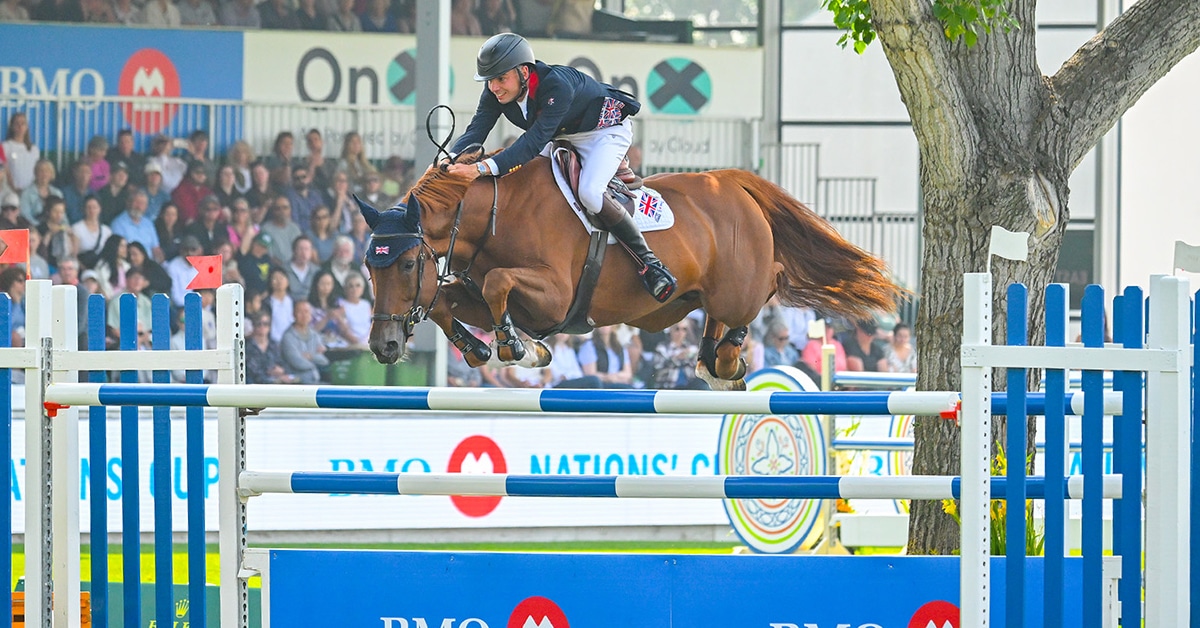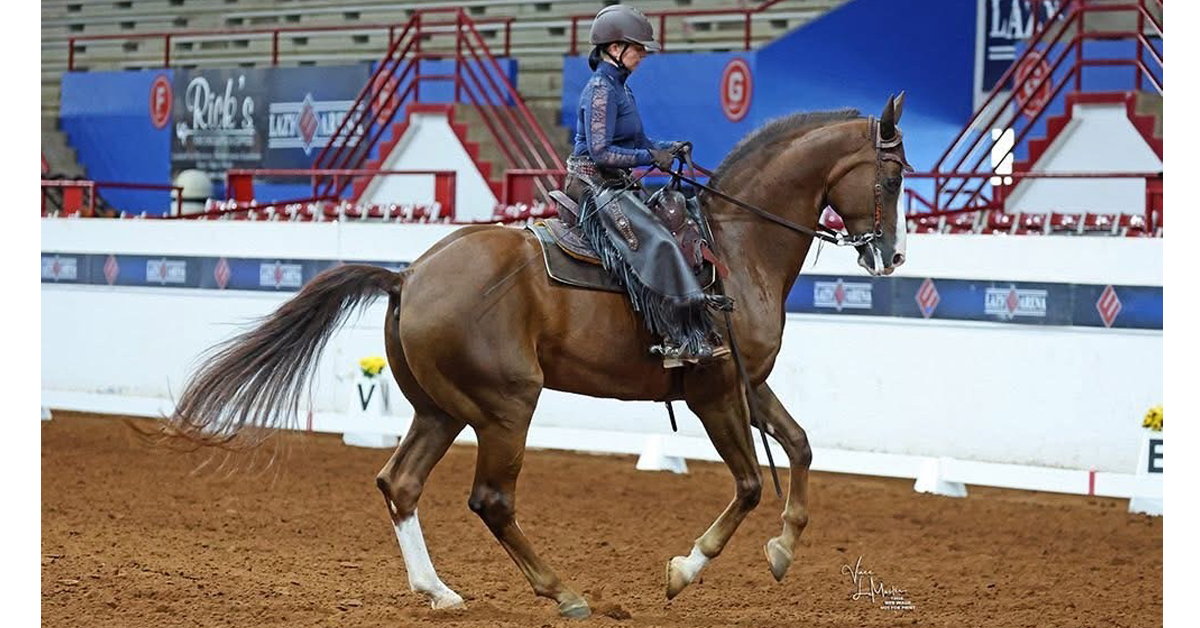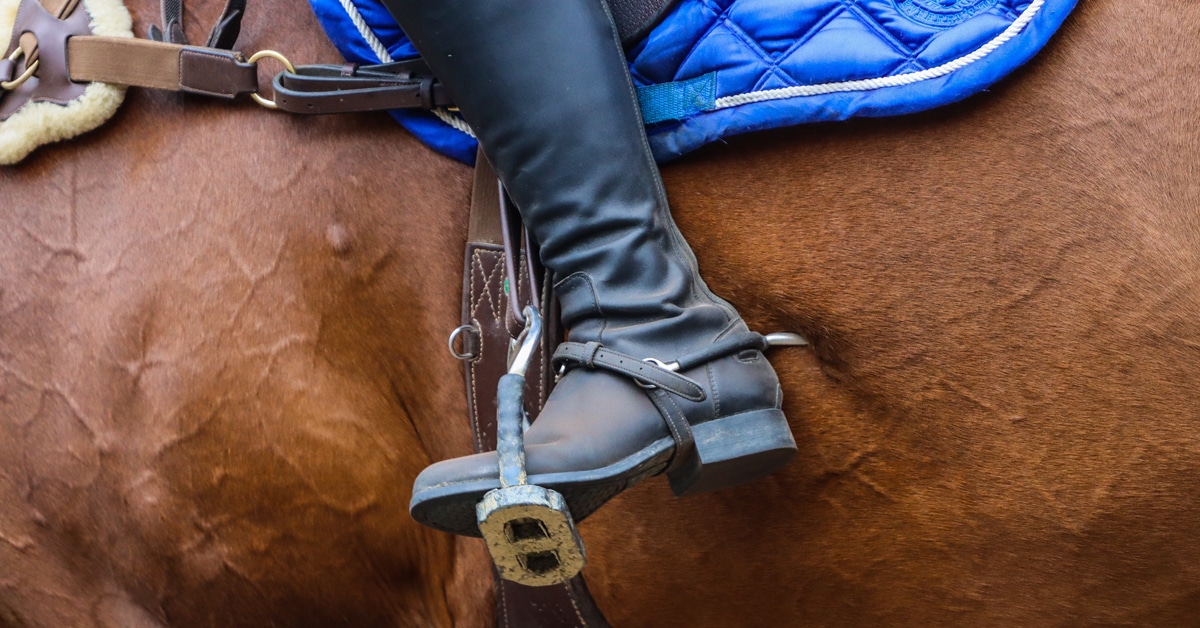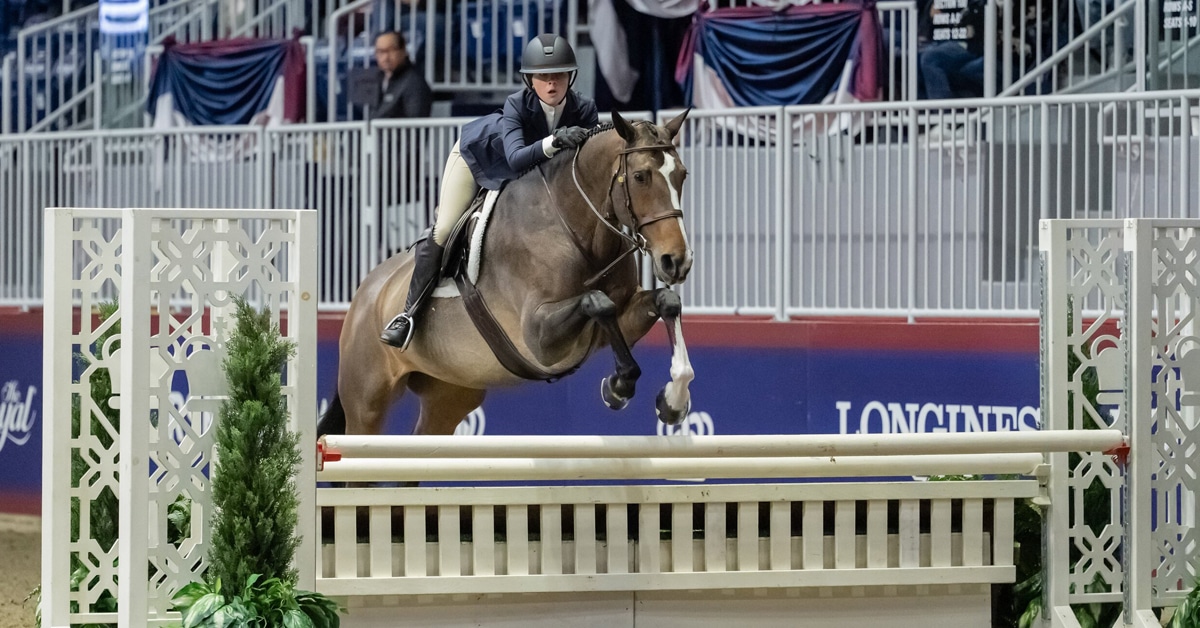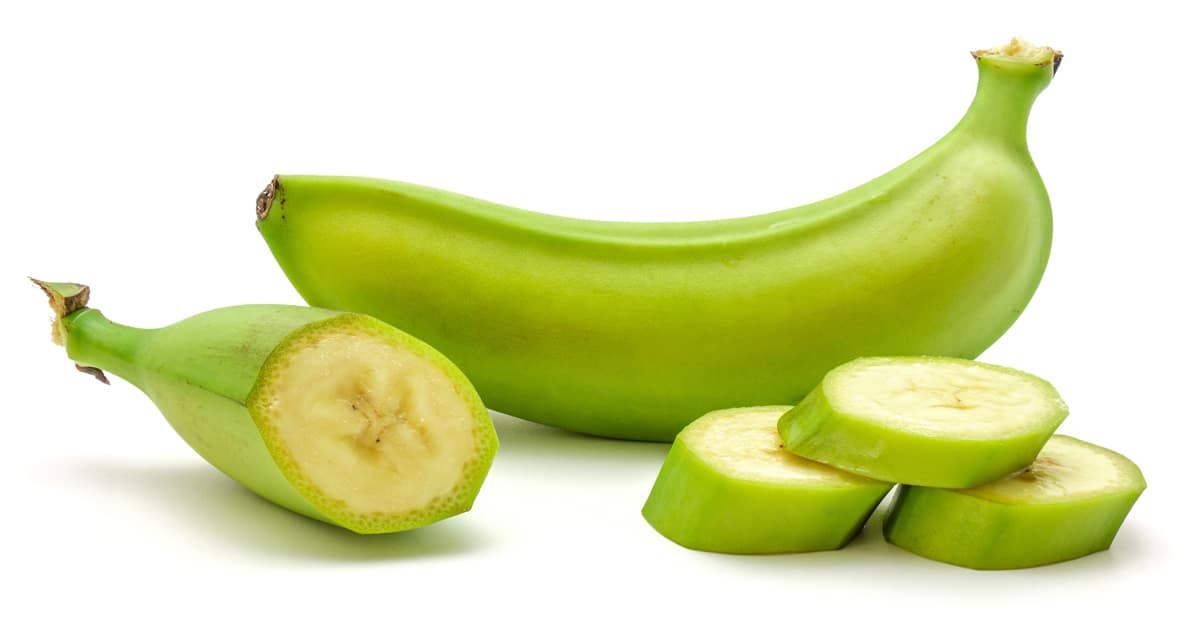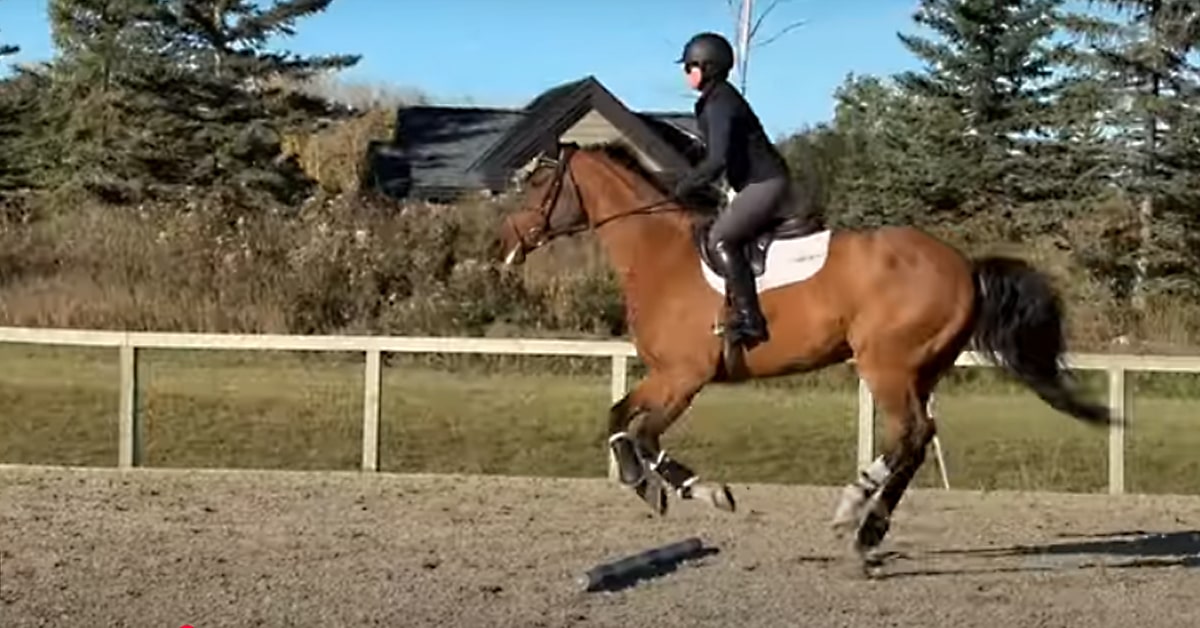If trends in competitive horse sports are telling us anything, it’s that despite the outcry for better welfare enforcement, there is an unsettling correlation between what is being lauded in competition and what the research is telling us acts against equine welfare. One of the less-addressed repercussions of this is the normalization of gait abnormalities and pain behaviours, and thus the failure of many riders, owners, and even some judges to recognize them as such.
A recent study by Sue Dyson and Danica Pollard compares the behaviours of lame versus non-lame horses ridden at competitions, and has consequently also shed light on the high prevalence of lameness in sport horses in competition, including low-level one-day event, 5* three-day event, and Grand Prix dressage horses. They note that many riders and trainers are poor at recognizing lameness and interpreting equine behaviour.
Through having previously developed the Ridden Horse Pain Ethogram (RHpE), Dyson established a reliable grading system which identifies 24 behaviours that are ten times more likely to be exhibited by a horse in pain. If eight or more of these behaviours are present, the horse is assuredly suffering from musculoskeletal pain, but even with less than eight behaviours, the horse may still be experiencing pain.
For Dyson and Pollard’s recent study published in June 2024, data was collected either from “video recordings acquired in a standardised way during Grand Prix dressage tests, during live assessment of horses warming up for the dressage phase of 5* three-day events, or during the dressage tests of horses competing at lower-level (British Eventing 90, 100, and Novice) one-day events.”
With the aim to collate behavioural data, they applied the RHpE to 1,358 horses including 211 horses in Grand Prix dressage (GP), 137 horses in 5* three-day events (TDE), and 1,010 horses in low-level one-day events (ODE). All horses that had competed in international level Grand Prix dressage and at 5* three-day events had been deemed fit to compete by the Ground Jury and the Veterinary Delegate after undergoing a mandatory in-hand horse inspection. Horses competing at national (sub-elite) Grand Prix dressage or lower-level one-day events had not undergone any independent inspection but were assumed by their riders and/or owners to be fit for competition. By quantifying the frequency of occurrence of RHpE behaviours in pain-free horses and those with lameness or abnormalities of canter, the objective was to determine any differences between disciplines and levels of competition.
Frequency of Lameness
Of the 1,358 horses, only 805 (59%) showed no evidence of lameness, with 550 (40.5%) being non-lame with a normal canter and 255 (18.8%) being non-lame but with an abnormal canter. The remaining 553 horses (41%) were observed as being lame. Of those, 481 (87%) demonstrated continuous lameness while 72 (13%) exhibited episodic lameness. A relationship was found between the presence of lameness and event type, as well as lameness type and event type.
The highest occurrence of lameness was in the low-level ODE affecting 465 of the 1,010 horses (46%). These horses also had the highest prevalence of continuous lameness affecting 45% of the 1,010 horses, as well as the highest presence of abnormal canter at 21.7% or 219 horses. Hindlimb lameness, the most common presentation type, was also highest in the low-level ODE and affected 381 horses (37.7%) accounting for the majority of the 442 horses in total that presented with hindlimb lameness.
In the Grand Prix dressage, 57 of the 211 horses (27%) were determined lame, and of the 211 horses, 24% had an episodic lameness and 3% had a continuous lameness. The presence of abnormal canter was lowest in the Grand Prix dressage horses, affecting 7.6%, or 16 horses. Although lameness affected 27% of these horses, these were “episodic in the majority, … low-grade and generally only observed during movements which were biomechanically demanding” such as piaffe or half pass.
The presence of lameness was lowest in the 5* TDE event type, affecting 31 of the 137 horses (22.6%). 16% presented as continuous lameness and 7% as episodic. This group was second-highest for having abnormal canter at 15% of the 137. Like the Grand Prix dressage, despite lameness affecting 23% of 5* TDE horses, occurrence was largely episodic and low grade.
The majority of the lame horses presented with hindlimb lameness (79.9%; 442), with 10.8% (60) having forelimb lameness and 9.2% (51) having both forelimb and hindlimb lameness.
Frequency of RHpE
Notable associations were linked between gait abnormalities and some of the RHpE behaviours, especially in lame horses, including repeated stumbling or bilateral hindlimb toe drag (strong), ears back for ≥ 5s (moderate), intense stare for ≥ 5s (moderate to strong), and bit being pulled through to one side and moving on three tracks (weak to moderate). Positive scores for lameness or the display of RHpE behaviours were only assigned if a result was indisputable.
Several RHpE behaviours were found to have notable associations with event type. Grand Prix horses were most likely to demonstrate mouth opening with separation of the teeth for ≥10s (a staggering 71.6%), and repeated tail swishing (39.3%). The 5* TDE horses showed a weak to moderate association with repeated head tilt (56.2%) and repeated exposure of the sclera (22.6%). Low-level ODE horses demonstrated a moderate association with moving on three tracks (28.4%) and repeated stumbling or bilateral hindlimb toe drag (37.4%). This event type also displayed a weak to moderate relationship with both the bit being pulled through to one side (15.8%), and head movement up and down not being in synchrony with the trot rhythm (17.2%).
RHpE and Welfare
The authors noted a “disturbing” high prevalence of “head behind the vertical >10° for at least 10 seconds at all levels in the current study in both the non-lame horses and those with mild lameness.” As one of the RHpE behaviours, this was recorded and found to be the most commonly observed behaviour affecting 833 horses (61.3%). This head/neck position influences a horse’s ability to engage the thoracic sling muscles, and negatively affects the range of motion of the thoracolumbosacral region as well as movement patterns of the hindlimbs. “This undesirable trend may also encourage restrictive and/or coercive riding which may predispose to the development of conflict behaviours and/ or musculoskeletal discomfort.” (Dyson, Pollard 2024)
The second most observed RHpE was “an intense stare for five or more seconds” affecting 610 horses (44.9%), followed by “head being tilted repeatedly” affecting 521 horses (38.4%).
A “disturbingly high frequency of repeated mouth opening with separation of the teeth and tail swishing especially at Grand Prix dressage and 5*TDE” was also noted. In addition to the 71% of GP horses, 44.5% of the 5* TDE horses exhibited repeated mouth opening with separation of the teeth.
Despite several recent studies highlighting that these behaviours are described in the FEI guidelines as evasions, resistances and disobedience, they are either unnoticed, ignored, or simply not penalized. Repeated mouth opening, for example, is likely to be indicative of discomfort or pain, and although it is designated by the FEI as an evasion, the use of restrictive and over-tight nosebands (which are problematic on their own) could be reducing the extent of and/or frequency of these behaviours and potentially masking the horse’s discomfort and pain.
As this recent study and many before it have demonstrated, the majority of riders and owners struggle to identify low- and even mid-grade lameness, especially of the hindlimbs. Although these lamenesses may not significantly impact a horse’s overall performance, the prevalence of RHpE behaviours was significantly higher for most of the 24 behaviours in lame horses even if the severity of lameness was very mild. This should call attention to the distress of horses in any kind of pain, regardless of whether or not the horse “looks” okay. Familiarization with the RHpE could help riders differentiate training issues from horses expressing physical distress via pain behaviours.
Regardless of how commonly the 24 behaviours may be observed in riding horses, they should not be considered normal or dismissed as personality quirks. They have been proven to strongly correlate with musculoskeletal pain. Particularly where multiple behaviours are observed and especially when there are more than 8, it is strongly recommended to have the horse examined by a veterinarian. Similarly, repeated opening of the mouth should be investigated as there are multiple possible reasons. Recognizing RHpE behaviours can bring about earlier diagnoses of the cause of a horse’s discomfort for a quicker resolution.
Where the goal of riding is to nurture a harmonious relationship, we need to do a better job identifying gait abnormalities and taking action to resolve the causes of pain behaviours. The high prevalence of lameness in competition horses stresses the importance of owners, judges, riders, and trainers being able to recognize how a normal, happy, and healthy horse should move.
The Latest

